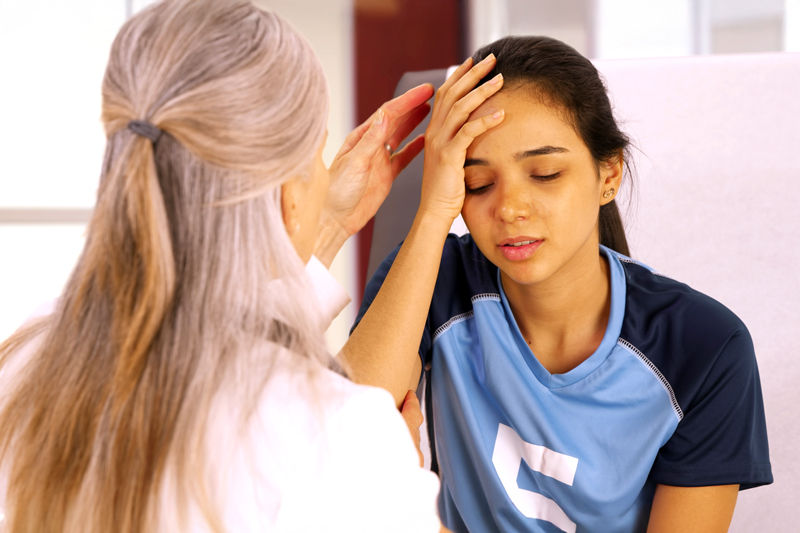Should I remove someone's motorbike helmet after a crash?
- jude72
- Jul 26, 2022
- 3 min read
Updated: Jan 28, 2025

It’s a common question for all us first aid trainers – “If I come across a motorbike accident should I remove the rider’s helmet before starting first aid?”
It’s a good question. We hear it a lot in our first aid training courses. The answer unfortunately is not that simple.
(Of course your first act, with any motorcycle accident is to immediately call an ambulance. Even if the person says they are "fine" and it was only a "minor" accident, they could be in shock and not aware how seriously they are injured.)
Now whether or not to remove the motorbike rider's helmet, depends on what sort of injuries the person has suffered and what first aid actions you will be undertaking. Secondly, it also depends on what type of motorbike helmet the person is wearing.
The greatest concern with any motorcycle accident is always with neck and back injuries. (Generally, the helmet does a fantastic job of protecting the head but the neck is another story.)
Most people who come across a motorcycle accident or are involved in one, tend to worry that if they remove someone’s helmet to apply first aid, they might damage the rider’s neck. This is a genuine concern, but sometimes other more important factors can override this worry.
Often it comes down to one critical thing – is the patient conscious and breathing? If they are and they are able to speak with you, then the best thing to do is to leave their helmet on, especialy if you don’t know the state of their head, neck or shoulder injuries. As long as they remain conscious and breathing, then leaving their helmet on is generally the safest thing to.
If they fall unconscious however or stop breathing, then the following applies.
If you come across a motorcyle accident and the victim is unconscious and not breathing then their airways always take priority over everything else. If they are not breathing, they will need urgent CPR.
Whether or not you need to take their helmet off to start the CPR, depends on which style of motorbike helmet they are wearing.
IF they have an older style open face helmet which only covers their head but leaves their face and particularly their mouth, nose and throat open and exposed, then generally you don’t have to remove the helmet to apply CPR and other first aid.
But if they are wearing a "full face" motorcycle helmet that extends around their chin and covers their mouth and nose, you will have to remove it quickly and carefully to check their airways and breathing and to commence CPR.
Note: some helmets have “red tags” on the side that you can pull to remove the cheek guards first to help make removing the helmet easier.
To remove the helmet of a motorcycle accident victim follow these simple steps:
Roll the person gently and carefully onto their back (which is the position you will need them to be in for CPR anyway.)
If possible get another person to hold their helmet from behind to keep their head and neck as still as possible. (If it's only you, try to put one hand on the helmet to keep their head still, while you deal with the chin strap.)
Carefully undo or cut the helmet chin strap, then slowly slide the helmet straight off their head, parallel to the ground, remembering to gently tip the top of the helmet back a bit to ensure the helmet comes off over their nose. Do not rock, twist or force the helmet off or push the person's head too far off the ground to get the helmet off.
Once the helmet is off, immediately start applying CPR and/or any other first aid required (such as stopping any serious bleeding). If you suspect any severe neck or spine injuries in the patient, then apply standard first aid training protocols for them in that situation.
Important tip: After removing the helmet, do not throw it away. Always keep the helmet with the patient so that the ambulance crew can check it for signs of impact injury.
Also look to see if the helmet has a red dot on the side. This indicates the rider has a card inside their helmet containing all their vital medical information like Blood type, allergies, medications, etc
To get more of your first aid training questions answered, please read our other blogs.
If you are a motorbike rider and belong to a club and would like someone to come and give your group first aid training, please contact us on 1300 661 065. All you need is a minimum of 12 people to have us to come to you and train you in your preferred location.
For any smaller groups you can book first aid training with us at our centre in Truganina. Simply click this link https://www.resultsfirstaid.com/courses








Removing a motorbike helmet after a crash can be risky and should only be done by trained medical professionals unless absolutely necessary for safety, such as ensuring the rider can breathe. It's crucial to prioritize spinal and neck stability to avoid worsening potential injuries. If you have been involved in a motorcycle accident, contact us here: https://rjoneslawgroup.com/areas-we-serve/houston-tx/motorcycle-accident-lawyer/